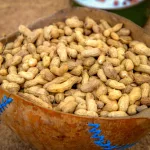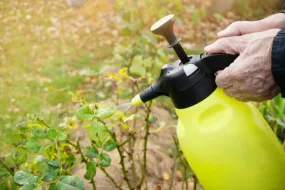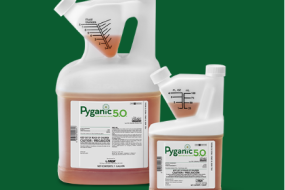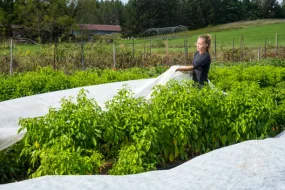Hey there, curious readers! Today, we’re diving deep into a topic that might not be on everyone’s radar but is important nonetheless: Vesicular Stomatitis in humans. This viral infection can be quite perplexing, so we’re here to demystify it for you. We’ll break down its causes, symptoms, and treatment options in plain, conversational language.
What is Vesicular Stomatitis?
Let’s start with the basics. Vesicular Stomatitis, often simply referred to as VSV, is a viral infection that primarily affects livestock such as horses, cattle, and swine. But here’s the twist—it can occasionally jump over to humans. This phenomenon is relatively rare, but it does happen.
Causes of Vesicular Stomatitis in Humans:
So, how does VSV make the leap from animals to humans? The virus responsible for Vesicular Stomatitis, known as the Vesicular Stomatitis Virus (clever, right?), can be transmitted through contact with infected animals or their secretions. In humans, it can cause symptoms similar to those observed in animals.
While human cases of VSV are infrequent, they’re more likely to occur in individuals who work closely with livestock or spend a lot of time in rural areas. So, if you’re a rancher, farmer, or veterinarian, you might want to pay extra attention to this.
Also Read>>>>>Discover The Causes, Symptoms, and Prevention of Peste des Petits Ruminants (PPR) Viral Disease
Symptoms of Vesicular Stomatitis in Humans:
Alright, let’s talk symptoms. If you’ve been exposed to VSV, you might start experiencing signs of infection within a couple of days. These can include:
Fever: A rise in body temperature is often one of the initial signs.
Oral Sores: Painful blisters or sores can appear in and around your mouth, on your tongue, gums, and lips. These can make eating and drinking uncomfortable.
Sore Throat: An accompanying sore throat is common, making it painful to swallow.
Drooling: Due to the mouth sores, you might find yourself drooling more than usual.
General Malaise: Feeling generally unwell, fatigued, and achy can be part of the package.
Nausea: Some individuals may experience nausea or even vomiting.
Headache: A persistent headache can also be a symptom of VSV.
Diagnosing Vesicular Stomatitis in Humans:
If you’re experiencing these symptoms, it’s crucial to consult a healthcare professional. They’ll consider your medical history, symptoms, and any potential exposure to infected animals. To confirm the diagnosis, they may also conduct tests on fluid samples from the sores.
Also Read>>>>>Discover The Causes, Symptoms, and Prevention of Peste des Petits Ruminants (PPR) Viral Disease
Treatment for Vesicular Stomatitis in Humans:
The good news is that Vesicular Stomatitis in humans is typically a self-limiting condition. This means that, in most cases, it will resolve on its own within a couple of weeks. However, there are some steps you can take to manage the symptoms and speed up your recovery:
Pain Relief: Over-the-counter pain relievers can help alleviate discomfort and reduce fever.
Hydration: Staying well-hydrated is crucial, especially if mouth sores make it painful to drink. Opt for cool, soothing liquids.
Soft Diet: Stick to soft, easy-to-eat foods to minimize irritation to your mouth.
Good Hygiene: To prevent the spread of the virus, practice good hygiene. Avoid close contact with others, and wash your hands frequently.
Isolation: It’s essential to isolate yourself until you’re no longer contagious, usually about a week after symptoms first appear.
Seek Medical Advice: If your symptoms worsen or persist, or if you have underlying health conditions, consult a healthcare provider for further guidance.
Also Read>>>>>Discover The Causes, Symptoms, and Prevention of Peste des Petits Ruminants (PPR) Viral Disease
Preventing Vesicular Stomatitis:
As the saying goes, prevention is better than cure. If you’re in a high-risk occupation or live in an area where VSV is known to affect animals, here are some precautions to consider:
Biosecurity Measures: Implement strict biosecurity measures on your farm or ranch to minimize the risk of VSV infection in animals.
Personal Protective Equipment: If you work closely with livestock, use appropriate protective gear like gloves and masks.
Avoid Close Contact: Minimize close contact with animals showing signs of Vesicular Stomatitis.
Isolation: Quarantine and isolate infected animals to prevent the spread of the virus.
Education: Stay informed about VSV outbreaks in your area and follow any guidance or recommendations from local health authorities.
In Conclusion:
While Vesicular Stomatitis in humans is relatively rare, it’s essential to be aware of the causes, symptoms, and treatment options. If you experience symptoms or suspect exposure to infected animals, seek medical advice promptly. Remember, good hygiene practices and preventive measures can go a long way in protecting yourself and your animals.
We hope this article has demystified Vesicular Stomatitis for you, providing you with the knowledge to recognize and respond to this infection effectively. Stay informed, stay safe, and take care of your health!
Also Read>>>>>Discover The Causes, Symptoms, and Prevention of Peste des Petits Ruminants (PPR) Viral Disease












One reply on “Discover The Causes, Symptoms, and Treatment of Vesicular Stomatitis in Humans”
[…] Also Read >>>>>Discover The Causes, Symptoms, and Treatment of Vesicular Stomatitis i… […]